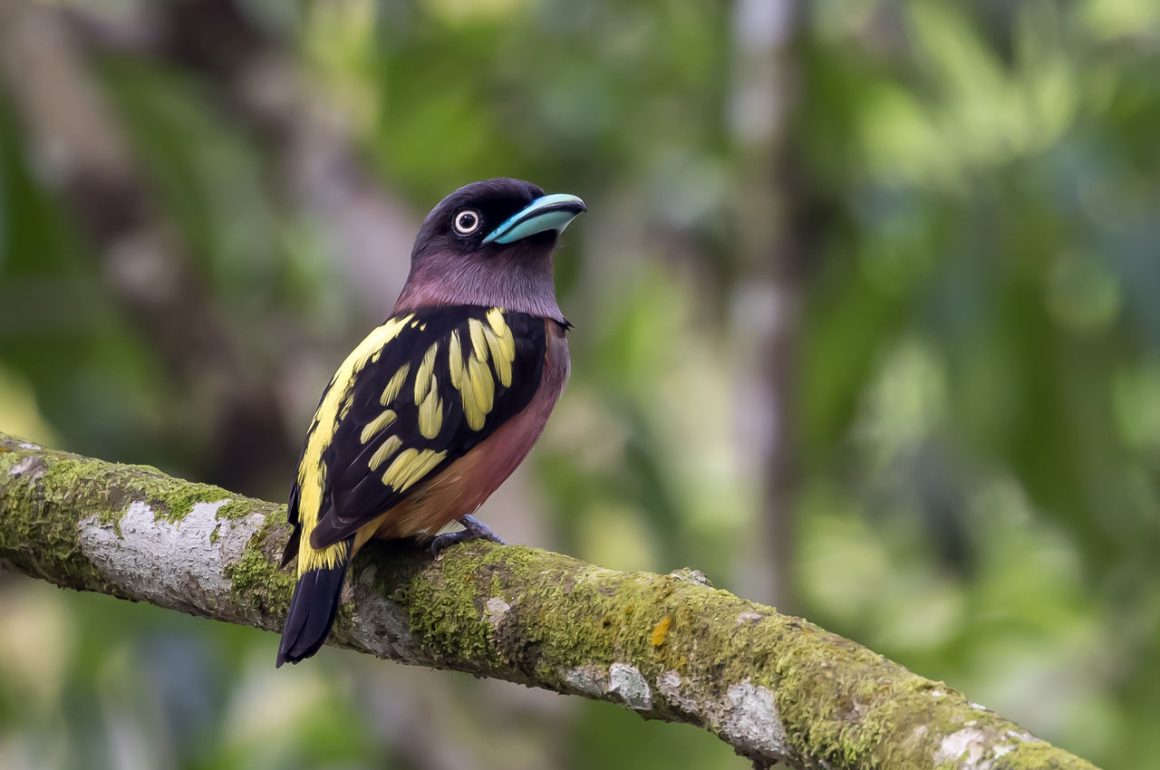
The area around Pronojiwo in East Java has quite a few interesting birds – so interesting that there is a separate post on two kingfishers I saw here, as well as another one on two nocturnal birds (an owl and a nightjar). This post covers the other birds I saw and photographed here.
The Javan Broadbill looks a lot like the Banded Broadbill from which it was split (at least according to the HBW) – but it has yellow rather than blue eyes. And in any case, looking a lot like a Banded Broadbill is not a bad thing anyway.
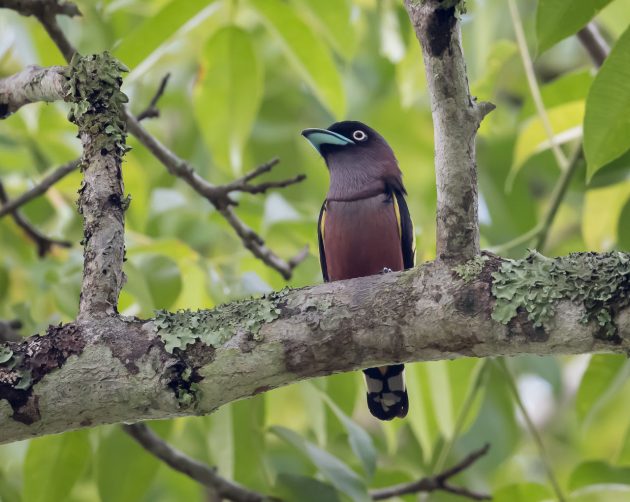
Its hunting technique is described as still-hunting by the HBW – ” perches motionless, apart from searching movements of the head, frequently directed upwards, then makes an irregular, fluttering flight to glean prey before alighting on a nearby perch”. A rather photography-friendly hunting technique that – if more widely adopted by species such as warblers – would substantially increase the average quality of my bird photos.
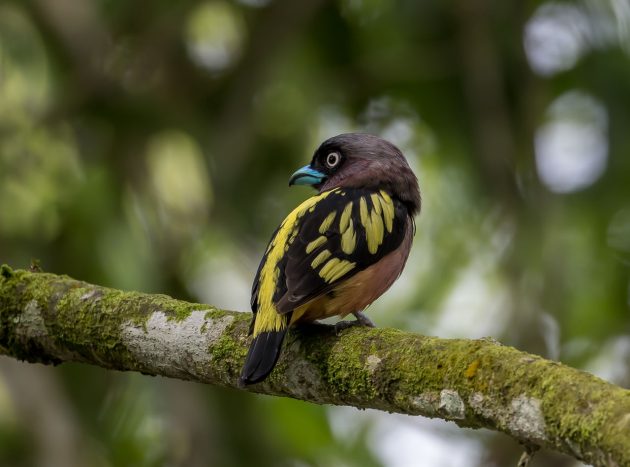
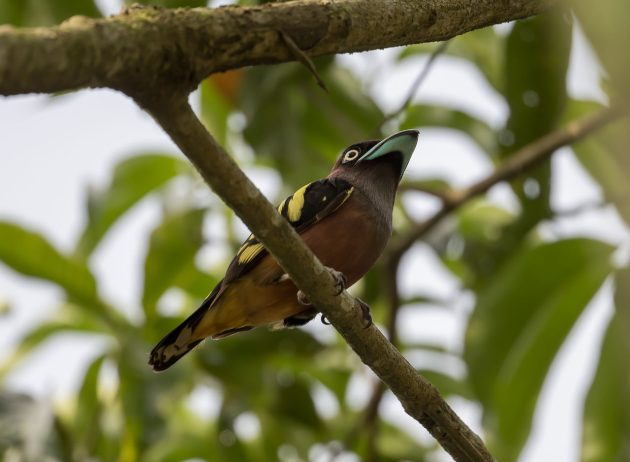
The Freckle-breasted Woodpecker has the color coding frequently employed by woodpeckers to indicate the sex – red crown male, black crown female.
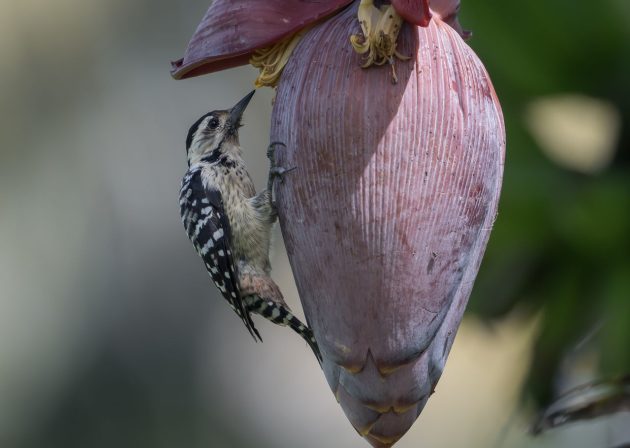
The genus name Dendrocopos means a tree striker (dendron is greek for tree, kopos means striking) – and interestingly, in German ornithological texts from around 1800, the word “Baumpicker” – a direct translation of both the scientific name and the English name woodpecker – is used, rather than the word “Specht”.
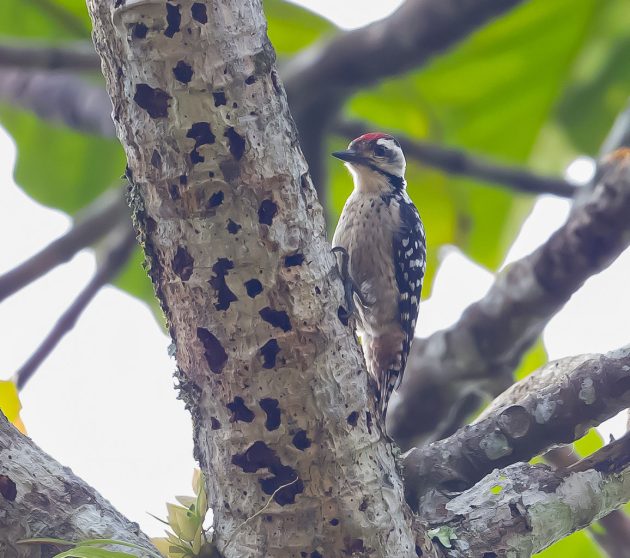
And yes, I am aware that writing about German names for the broader family indicates that there is not that much interesting to write about the specific species (or I did not find it).
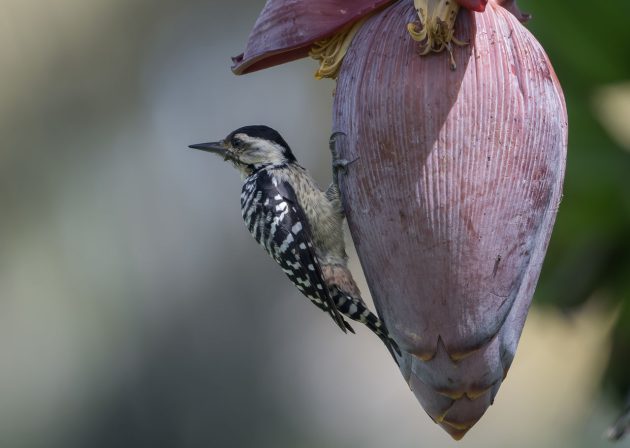
Unfortunately, the same is true for the four babblers that I saw in this area – but at least some of them look quite interesting. Take the Javan Black-capped Babbler.
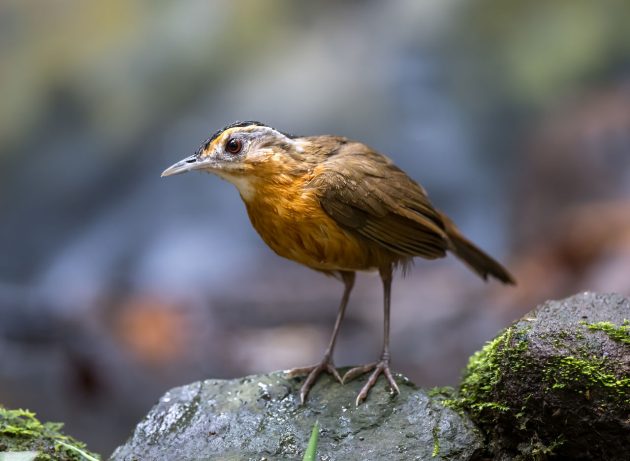
Even the usually rather subdued and uninterested HBW remarks on its striking head pattern.
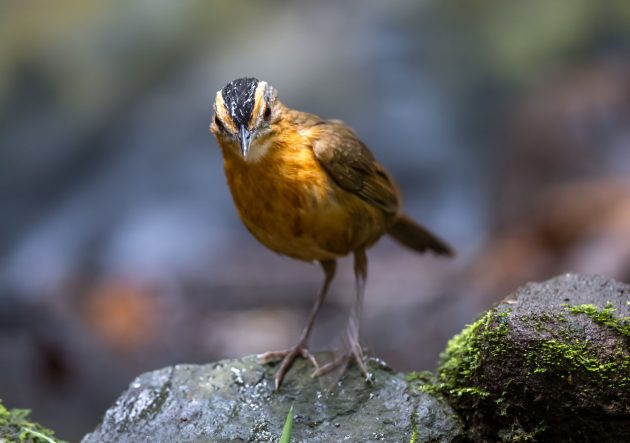
The species is the result of a split of the “Black-capped Babbler” into three (Javan, Malayan and Bornean Black-capped Babbler), and it is the most interesting of the three due to its orange rather than white “eyebrow” (supercilium, if you want to show off – but then you would probably talk about Pellorneum capistratum).
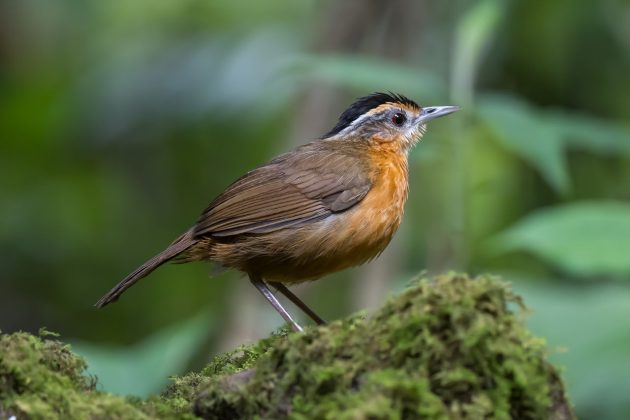
From what I have seen, it is one of these weird birds that prefer walking to flying – so instead of “Life is wasted on the living” (Douglas Adams), maybe “Flying is wasted on these birds”.
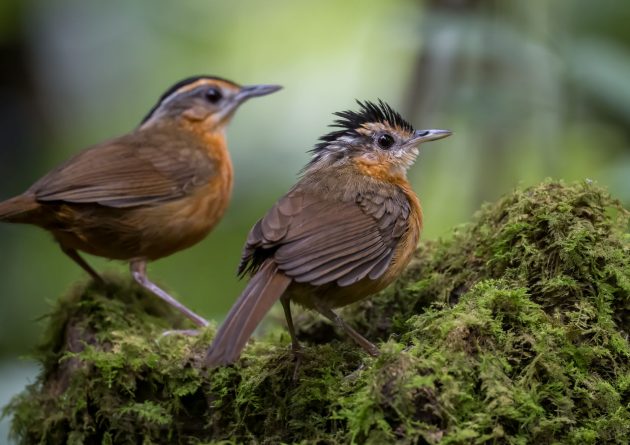
In the same habitat, I also saw the White-bibbed Babbler.
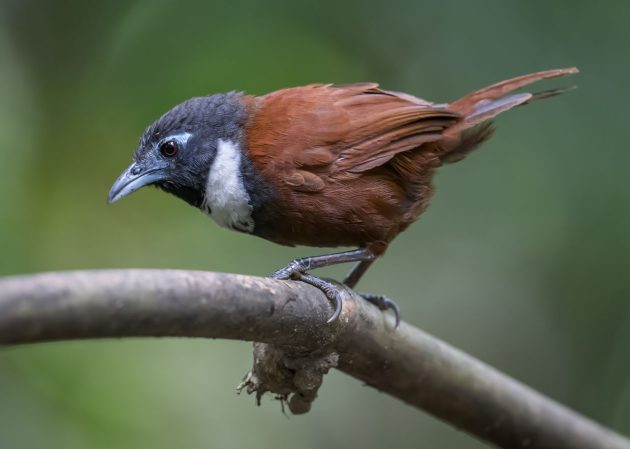
It is on a list of songbirds being traded on Indonesia’s online songbird market – fortunately with only 2 listings compared to tens of thousands for some other species.
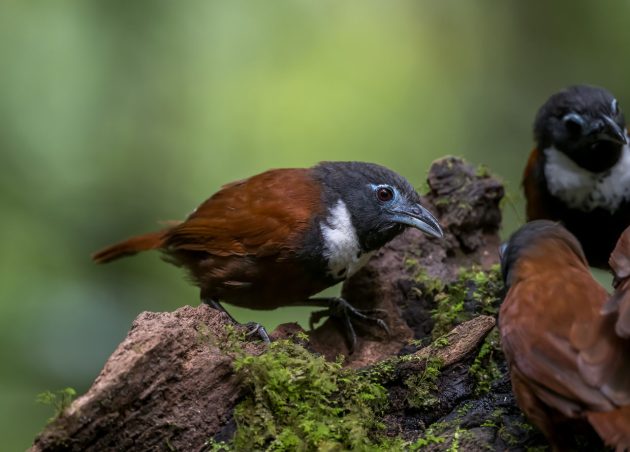
Despite being range-restricted and only present on Java and Bali, it is listed as Least Concern.
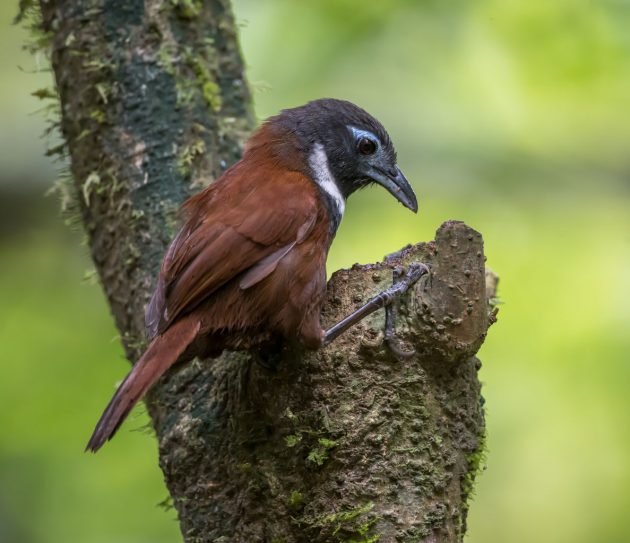
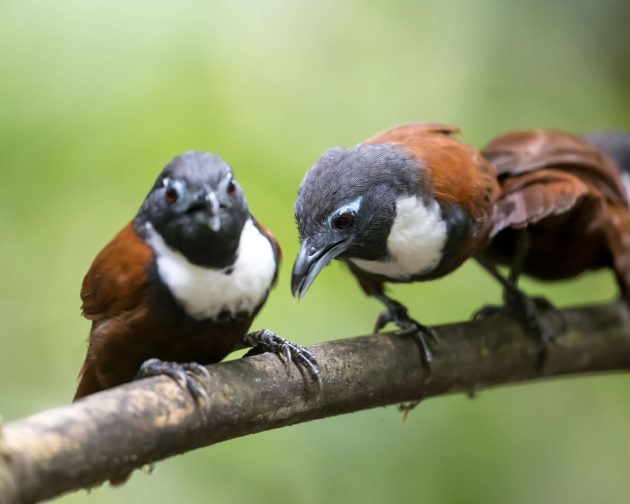
The other two babblers at the same hide were a bit less striking in appearance. That is somewhat surprising for Temminck’s Babbler …
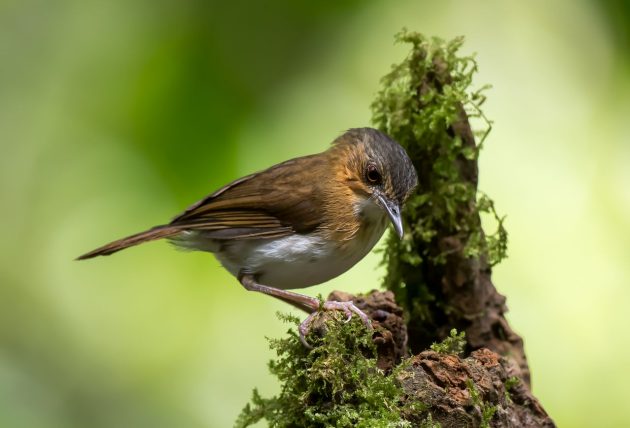
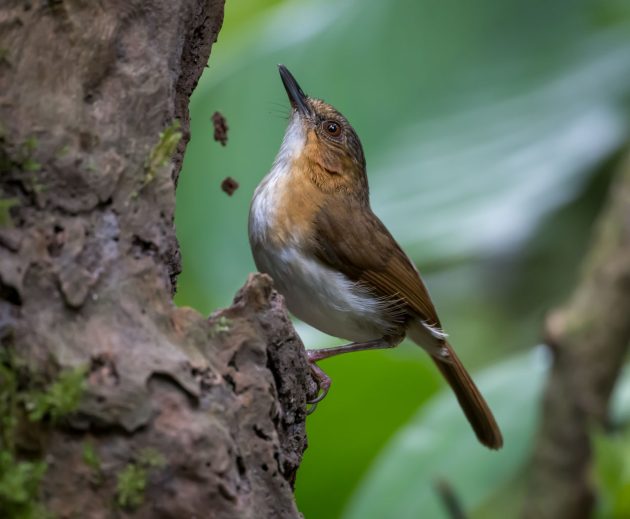
… as its scientific name Pellorneum pyrrogenys (“flame-colored cheeks”) sounds a bit more spectacular than the reality.
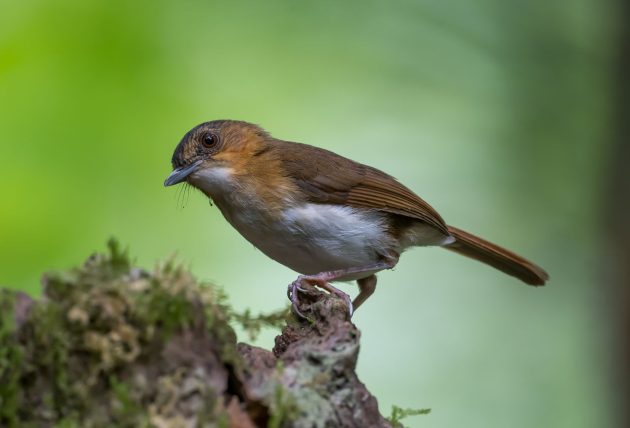
And as at that point I had already been on Java for a few days and seen Horsfield’s Babbler pretty much every day, I was not so excited about that species any longer either.
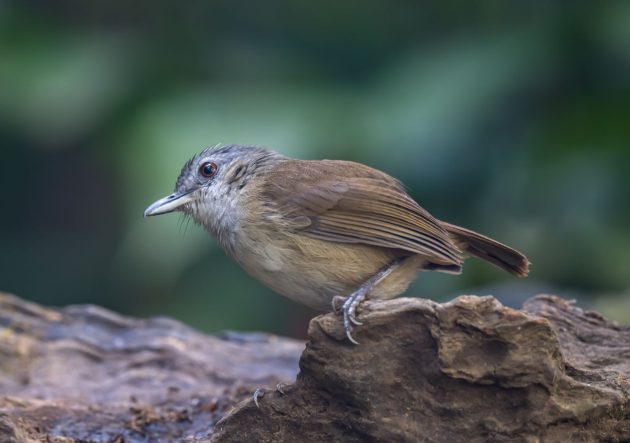
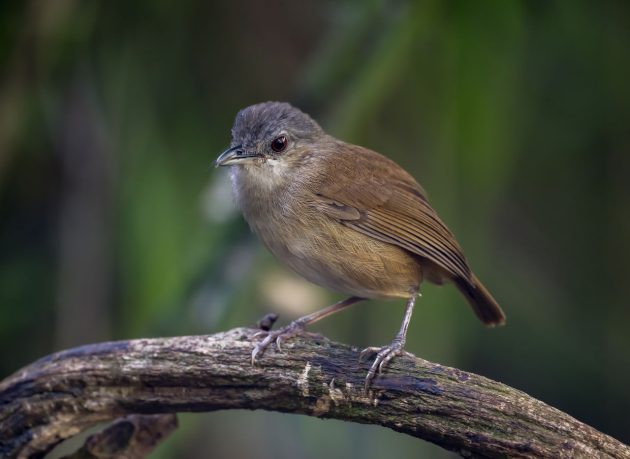
A bit more interesting, but familiar to me from China: Ashy Drongo …
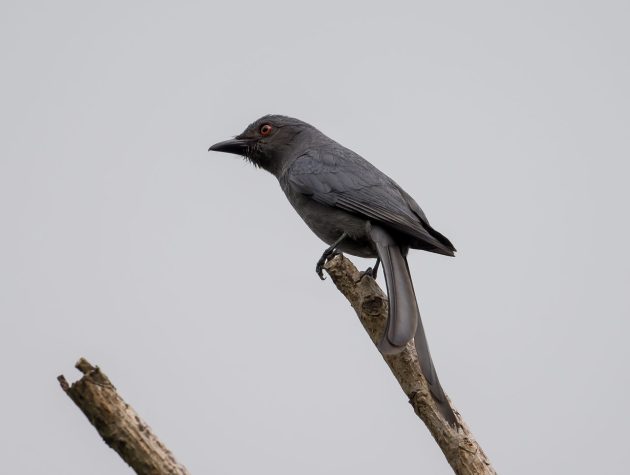
… and Blue Whistling Thrush.
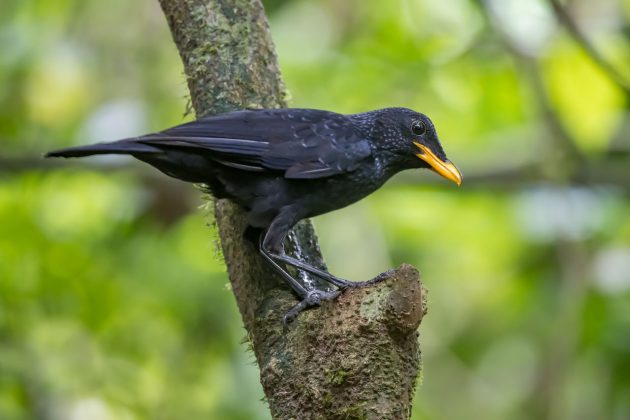
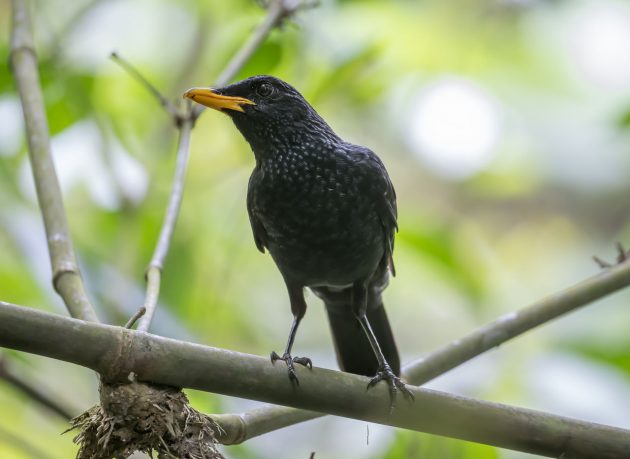
Seeing the distribution map of the Small Minivet (with a big gap between a population in Thailand and one in Java) made me wonder whether the Java subspecies awaits elevation to full status, but it seems more knowledgeable people have already looked at that hypothesis, and rejected it:
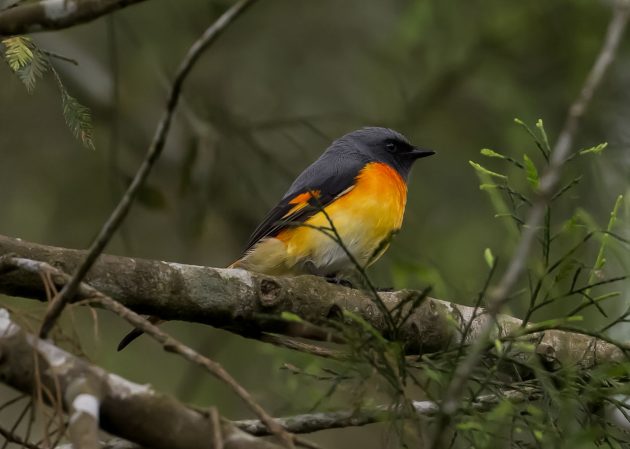
“View expressed in HBW that “isolated race saturatus possibly represents a different species, primarily on grounds of zoogeography” not supported by morphological evidence, and other avian taxa show similar ranges involving disjunct representatives on Java” (source).
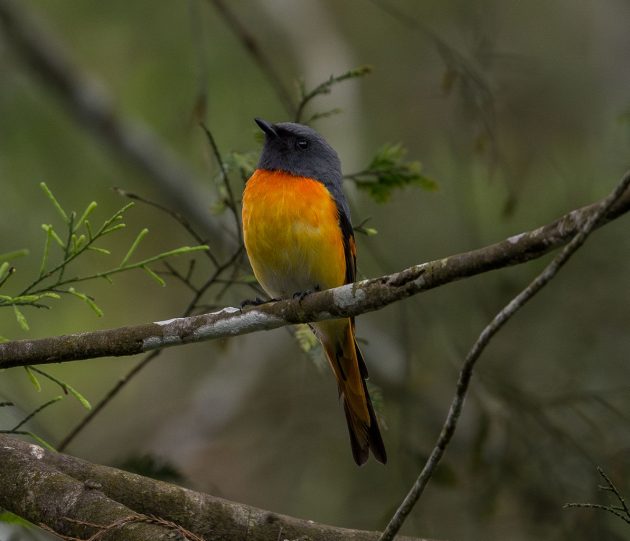
The female
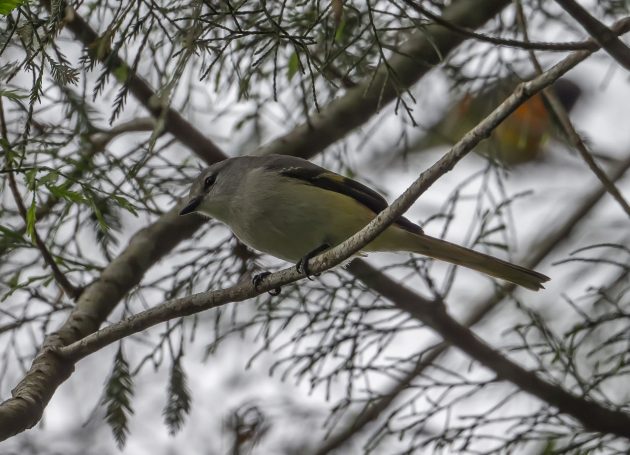
As the name indicates, it is the smallest minivet, smaller than the Scarlet Minivet seen at the same location. This seems to be another species with a scary number of subspecies – the HBW mentions 19, and a paper on the subspecies (then called races) of the species from 1946 includes the ominous-sounding sentence “it is felt that no apology is required for a new and more ambitious study of the species”.
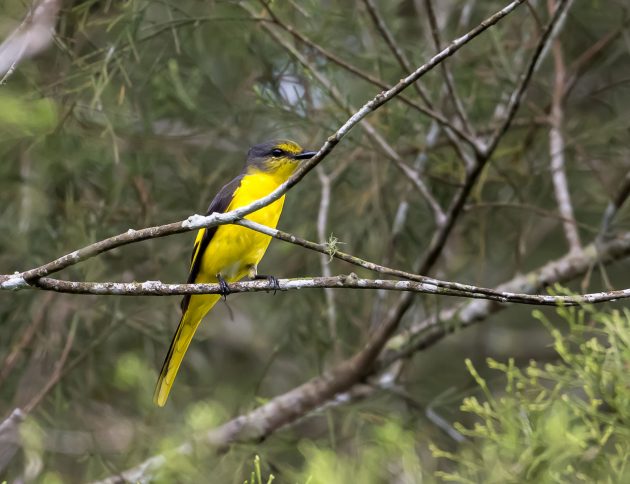
Despite seeing the Yellow-eared Barbet at three different locations, I failed to get truly decent photos.
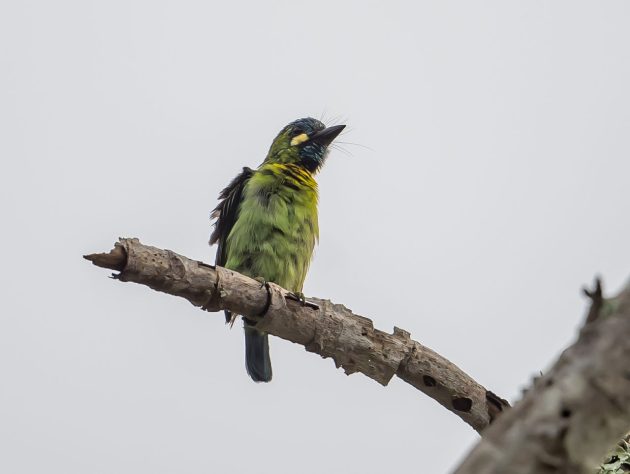
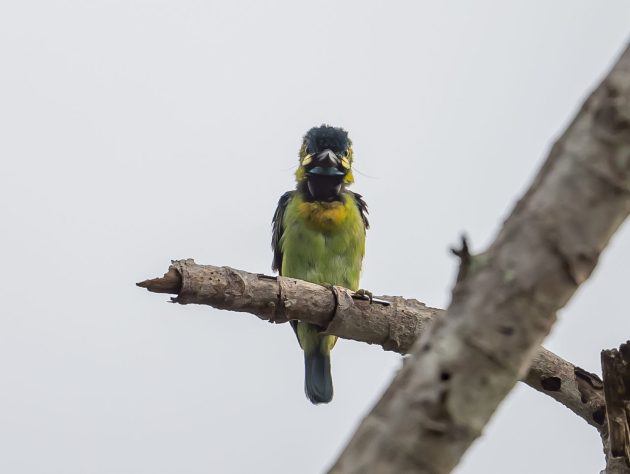
I was much more successful with the White-crowned Forktail, which visited a blind.
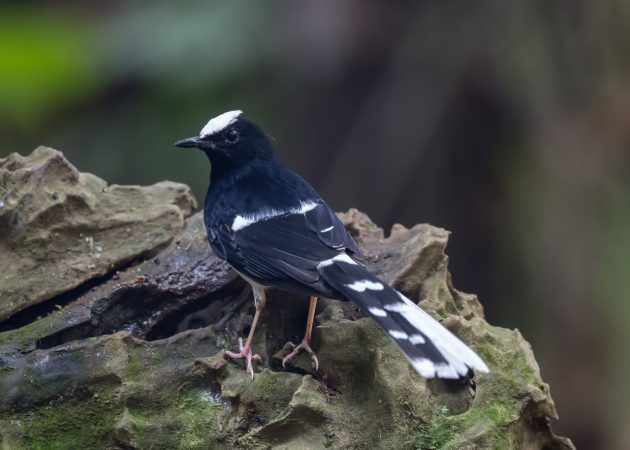
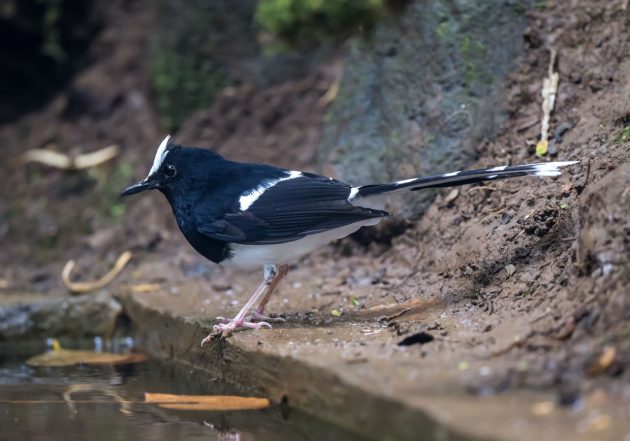
Good for photos, as this species is typically rather shy.
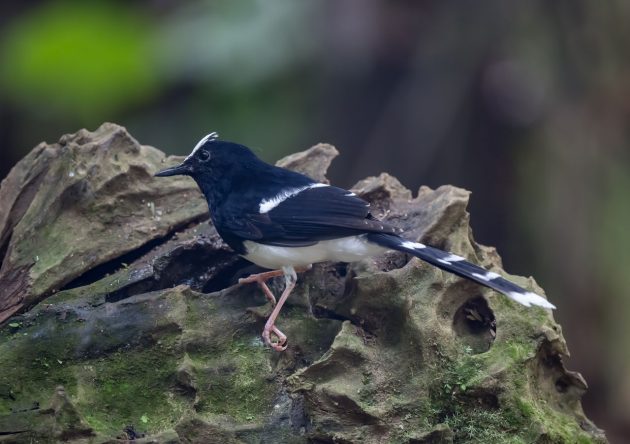
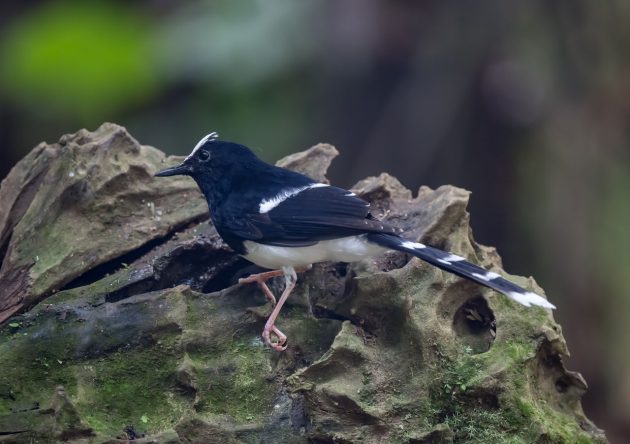
Finally, the Malaysian Pied Fantail. Not a rare species at all, but a nicely active one.
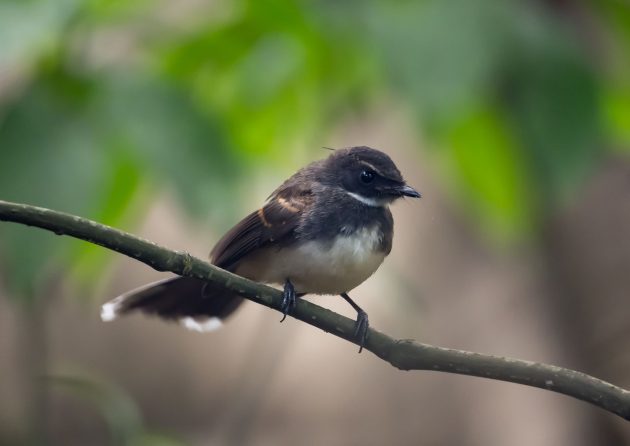
A paper describes a sea crossing of approximately 30 km by this species …
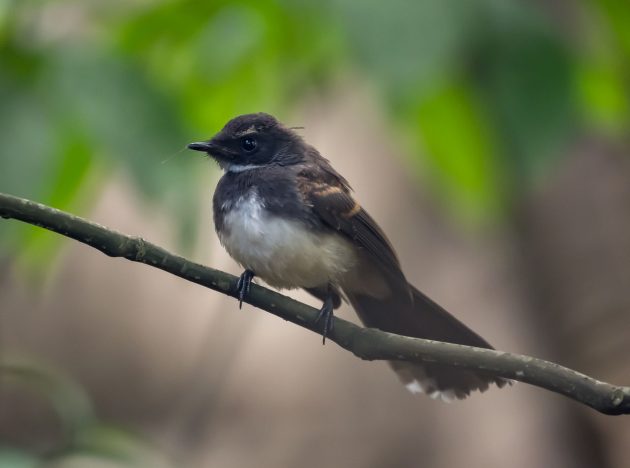
… which is a nice observation slightly marred by the pretentious first sentence of the paper: “The power of flight imbues bird with extraordinary potential to travel long distances”.
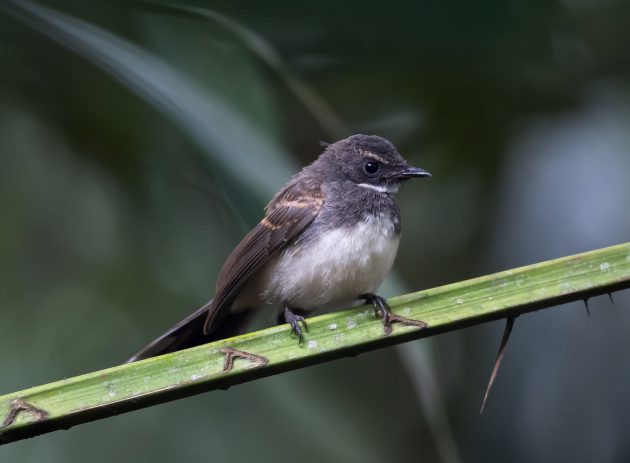
So, the Pronojiwo area is well worth seeing, as (hopefully) my three posts on the area show. Plus, it had the only restaurant I visited during my stay on East Java where beer was available. Cold, even.





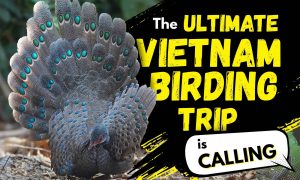


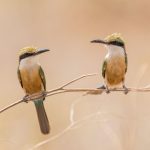
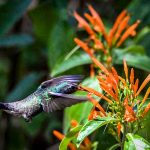
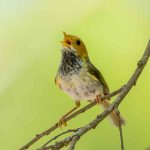
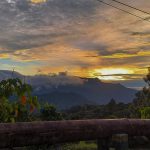

Java rocks! Pity about the ongoing bird trade.
They are all spectacular, of course. But my favorites: 1. the Javan Broadbill – such a unique looking bird. 2. White-crowned Forktail. Wow!
Agree with Peter about the bird trade – and on-line too. Disheartening to say the least.